
Measurements of Success in Sports & Studies
You may have seen the new Netflix documentary ‘Beckham’, about one of England’s most well-known footballers. Near the start, Beckham talks about his school days


Joy Biswas is the MYP Science and DP Chemistry teacher at OYIS. Originally from India, he has lived and taught before in China, Zimbabwe and the US. He enjoys cooking and playing bridge.
Growing up in India, one of the central events in Hinduism and an oft-repeated fable for children, is the churning of the ocean of milk between two groups of natural enemies; the devas (gods) and the asuras (demons, or titans). The devas, who had become weakened, as a result of a curse, used the asuras greed to help them recover the elixir of immortality, the amrita, from the depths of the cosmic ocean. When the amrita appeared, the gods and the asuras fought over its possession, though they had originally agreed to share it equally. Here is a rock sculpture of the same from the famous Angkor Vat in Laos, Cambodia.
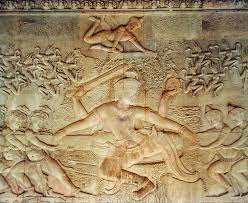
The Latin verb collaborare which means to work together with others, is the root of the word collaboration. However, working together could mean very different things depending on the field in which the action takes place. To collaborate in a musical orchestra is not the same as to collaborate in a cricket team. The initial point might be the same – people working together – but then everything changes: the number of people in the team, task organization, the scope they have to fulfill. As a matter of fact, collaboration is much more than a plural number of people working together. It is a complex process whose features and functions vary dramatically not only from field to field but also from case to case.
According to Y. N. Harari, the first achievement toward scientific progress was a collective admission of ignorance. By agreeing on the fact that humans do not hold the answers to fundamental questions, true seekers as a whole felt the urge to fill the gap: “Modern-day science is a unique tradition of knowledge inasmuch as it openly admits collective ignorance regarding the most important questions.” (Harari, 2011: 279–281).

The term “discipline” is related to the Latin disciplina, which means education, science, rules and fundamental principles, as well as giving instructions to a disciple. “Disciplines discipline disciples” (Barry & Born, 2013b, p. 1). Chettiparamb (2007) states that the Oxford English Dictionary records the word originated in the Middle Ages but that the origin of disciplines as a way of organizing academia varies geographically and depends on the type of discipline.
The growth of scientific disciplines can also be seen as a process of differentiation in society, in which new, independent communication systems are created. Each individual discipline is embedded in an internal environment of other disciplines. The constant, mutual observation and interaction of these disciplines is the most important factor in the dynamics of modern science.
In education, a distinction can be made between four levels of interdisciplinarity (Klein, 1990, p. 57) that are found in practice:
1. Students take a selection of courses from different departments;
2. The academic institution provides opportunity for students to share insights from various disciplinary courses;
3. Courses are aimed at an interdisciplinary subject, in which various schools or faculty members participate;
4. There is a conscious attempt to integrate material and methodologies from various fields of knowledge into a new, single, intellectually coherent entity and build a common vocabulary.
CERN, an acronym for Consiel Européen pour la Recherche Nucléaire, is an intergovernmental organization founded with the prime aim of performing fundamental research in nuclear physics. It hosts the world’s most powerful particle accelerator, the Large Hadron Collider (LHC), which makes protons and ions collide in four points of its 27 km circular tunnel.
Of the 20,000 people that globally work together on projects in CERN, only 2500 are employed directly by CERN. The remaining members are affiliated with institutes in more than 70 countries, for a total of 110 nationalities.
A big community such as this is organized in two interrelated categories: Experiments and Collaborations. The biggest Experiments at the four colliding points of the accelerator (named ALICE, ATLAS, CMS and LHCb) come with Collaborations that number 1500 to 8000 people, including scientists, engineers, technicians and administrative personnel. The aspiration of these Collaborations is to help in answering fundamental questions like what is the Universe made of and what keeps it together. The investigation begins with what might be termed a creative step: deciding which kind of experimental steps to pursue and defining directions to do so, but will only remain the stuff of dreams unless there is a global collaboration of scientists.
As is mentioned on the website, Osaka YMCA International School (OYIS) is built around the concept of community where all stakeholders strive to support students using the principles of Encounter, Connect and Transform. At the heart of this vision lies the skill of collaboration. MYP students recently showcased this when carrying out their Interdisciplinary units in the MYP.
IB Diploma students are required to choose at least one Science ‘discipline’ at the beginning of their Grade 11 journey. In IB jargon, Science is categorized as Group 4. One of the requirements for the successful completion of their choice of science course(s) is the collaborative Group 4 project.
As per the IB subject guide for the sciences, the group 4 project is an interdisciplinary activity in which all Diploma Programme science students must participate. The intention is that students from the different group 4 subjects (Physics, Chemistry and Biology) analyse a common topic or problem. The exercise is meant to be a collaborative experience where the emphasis is on the processes involved in, rather than the products of, such an activity. Here is an example of a Group 4 project from Yokohama International School, Japan:
This stage must involve all group 4 students meeting to “brainstorm” and discuss the central topic, sharing ideas and information. After selecting a topic or issue, the activities to be carried out must be clearly defined before moving from the planning stage to the action and evaluation stages.
Students should investigate the topic in mixed-subject groups or single subject groups. There should be collaboration during the action stage; findings of investigations should be shared with other students within the mixed/single-subject group.
The emphasis during this stage is on students sharing their findings, both successes and failures, with other students. How this is achieved can be decided by the teachers, the students or jointly, usually through a symposium or group presentations.
References:

You may have seen the new Netflix documentary ‘Beckham’, about one of England’s most well-known footballers. Near the start, Beckham talks about his school days
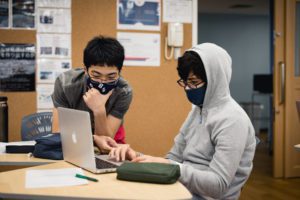
Students who are eligible for Grades 10 or 11 in August 2023 are invited to take the 2022 Scholarship Exam. This exam is the first step to potentially receiving the OYIS Achievement Award.
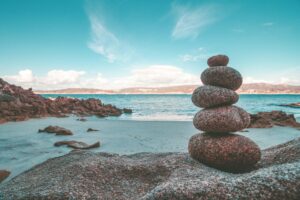
As the summer break comes to an end, I have found myself unconsciously reflecting on how I spent these last few weeks. I think I
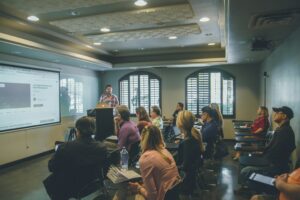
Osaka YMCA International School is hosting a professional learning event on Saturday, February 8, 2025. The focus of the sessions will be Rethinking Assessments, broken
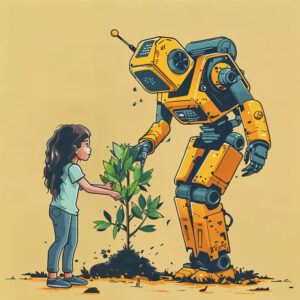
Since November 2022 when ChatGPT was released to the world, it’s seemed that AI has been everywhere in the news. Since then, AI has become
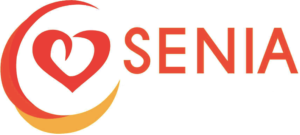
Celebrating Our Teachers: 5 Educators Earn SENIA Level 1 Certification! We are excited to announce that five of our dedicated teachers have recently completed their
Click here to start your application
Sign in Here
Osaka YMCA International School – Copyright 2025